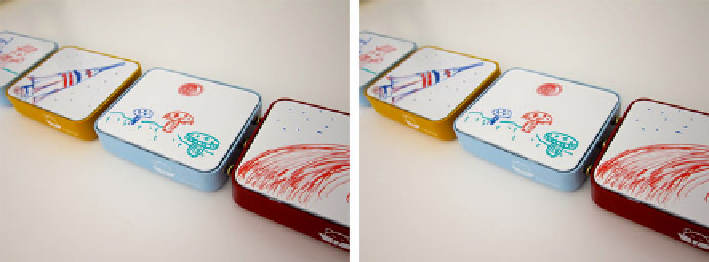Information Technology Reference
In-Depth Information
When users place the blocks on the platform, the BT gets the inputs of the entities
that are present (we refer to the blocks placed on the platform as the state of the
world). Regularly at a predefi ned time stamp, the BT performs updates about the
state of the world and checks the defi ned priorities before triggering any actions. As
a result, there are no predefi ned stories nor a linear narrative. The users create their
own narratives according to the sequence of blocks and the order in which they
place them on the platform.
12.4
Trying Out Different Ways of Involvement
12.4.1
The t-words Interface: Tangible Words
A second interface that resulted from the various design sessions with the children
is the
t-words
interface (Sylla et al.
2012
,
2013a
), which emerged out of the idea of
exploring and experimenting with narratives, focusing on the audio aspect. Children
no longer just use the content that they have at their disposal but are empowered to
create their very personal audio materials. Inspired by other tangible systems like
Telltale (Ananny
2001
), StoryMat (Cassel
2004
; Cassell, and Ryokai
2001
) or
Jabberstamp (Raffl e et al.
2007
), t-words consists of a set of rectangular blocks that
can record and play sounds, words or sentences, enabling users to record and store
audio, as well as to play the recorded sounds (Fig.
12.9
). Each block has an audio
recorder with a 4GB storage card, an audio player with an embedded speaker and
magnetic connectors on each side to connect to the other blocks.
Each block has a button to start and stop recording and an LED that gives the
user feedback about the action of recording and playing the sound. To play the
recorded audio, users snap the blocks together, and the recorded audio sequence
begins to play from left to right. The blocks can be arranged and rearranged creating
different audio sequences. The interface supports a variety of language-related
activities such as creating rhymes; recording sounds, words or sentences; inventing
Fig. 12.9
The t-words prototype

